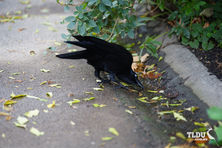
Shoppers Feedback:
Jan 17, 2017
Hello Ros,
I have now paid the invoice, but I would like to write to you just to say a big THANK YOU for getting me the Penguin!
The ChatterMate Penguin became a nice memory for me when I was in New Zealand, and I am so greatful to you for arranging so that I could have it! :-)
Thank you so much!!!!!!!!!!!
Regards,
Malin
Hi Ros,
Many thanks for your very kind email. I really appreciate your prompt reply!
I appreciate your advice regarding the decorations and customs. These are a gift for my daughter’s exchange student family so when she returns home on the weekend I will show her and see if she loves them as much as I do!
Thanks so very much again - I am truly grateful for your kind assistance.
Kind Regards
Bernadette
Ros,
Thanks again for the great customer service. It's a refreshing change!
Best regards,
Trevor
Hey Roz,
Thank you for your emails. Just loved my first order. The cute little Aussie bush critters are going to be used for an office Christmas decoration. My colleagues also liked them and talked about making an order to your site. I'll send you a photo when completed.
I'll be ordering more to send to my daughter's host family in America.
Fabulous service from you.
Kind regards,
Michelle
Thankyou. Order arrived today. One very happy grandson with his new beastly binoculars.
Regards,
Irene
- Home
- Wild Wonders
- Shop
- Aromas of Australia
- Australian Made
- Books
- Book Marks
- Christmas Decoration Sale
- Christmas Decorations
- Clocks
- Drink Holders
- Garden & Outdoor
- Gift Wrapping & Cards
- Home & Giftware
- Jewellery
- Keyrings
- New Products
- Pencils & Pen Holders
- Photo Frames
- Plush Toys
- Plush with Sound
- Sheepskin Rugs
- Stationery
- Stone Carvings
- Toys & Games
- Travel Goods
- Wedding
- Wild Figurines
- Wildlife Safety Products
- Wind Chimes
- Wine Charms
- View All Products
- Wildlife
- Australiana
- Explore
- Contact Us
Australian Raven

Quick Facts
| Length: | 52 cm |
| Height: | - |
| Weight: | 557 grams |
| Colour: | Black with white eyes |
| Habitat: | All habitat types with exception of arid areas in Western Australia |
| Food: | Mostly carnivorous, but eats grains, fruits, insects, small animals, eggs, refuse and carrion |
| Predators: | - |
| Status: | - |
Australian Ravens are black with white eyes in adults. The feathers on the throat (hackles) are longer than in other species, and a bird tends to extend these when calling, while holding its head and body in a horizontal position. Australian Ravens are usually seen in pairs. Another aid to identification of this species is the absence of wing-flicking while calling. Young birds resemble the adults, but have dark eyes, shorter throat hackles and often the presence of a pink, fleshy gape. This species is sometimes called a crow.
There are six members of the family found in Australia: five native breeding species and one infrequent self-introduction. Three are called crows and three ravens, although there is really little difference. Most Australian species are similar in size and colouration, and can be difficult to tell apart. In some cases, identification is aided by the separate ranges of different species, but differences in plumage, habits and calls offer good clues for distinguishing them. The bases of the feathers of the crows are white, while those of the ravens are grey, although this is only useful if birds are held in the hand or if discarded feathers are found.
The Australian Raven is found in eastern, southern and central Australia.
The Australian Raven is found in all habitat types, with the exception of the more arid areas of Western Australia.
The Family Corvidae has a wide-ranging diet that may consist of grains, fruits, insects, small animals, eggs, refuse and carrion; however, the Australian Raven is mainly carnivorous.
Australian Ravens construct a large untidy nest, normally consisting of bowl or platform of sticks, lined with grasses, bark and feathers. Both sexes construct the nest and feed the young. The incubation of the eggs is performed solely by the female, and only one brood is raised in a year.
Last Updated: Thursday 9th January, 2014
BirdLife Australia - www.birdlife.org.au
BUSH e-TELEGRAPH
Signup for our monthly newsletter the "e-Telegraph"
Quick Links
Home | The Beginning | About The Land Down Under | Wild Wonders | Advertise on Wild Wonders | Christmas Decoration Sale | Christmas Tree Decorations | Drink Holders | Plush with Sound | Stone Carvings | Wildlife Wine Charms | Freebies | Australian Wildlife | Help Our Wildlife | Australiana | Photo of the Month | Explore The Land Down Under | Contact Us | Legal Notices

